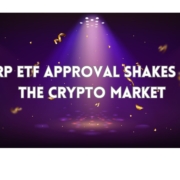XRP ETF Approval Shakes Up the Crypto Market
XRP ETF Approval Shakes Up the Crypto Market
The XRP ETF approval has brought fresh excitement to the crypto world, especially for traders and investors who’ve been watching Ripple and its native token closely. With the U.S. Securities and Exchange Commission (SEC) giving the green light to three XRP futures-based exchange-traded funds from ProShares, the conversation around XRP is heating up again. So, what’s really going on—and why does it matter?
XRP ETF Approval: What Actually Happened?
On April 28, 2025, the SEC approved ProShares to launch three XRP futures ETFs: the Ultra XRP ETF (2x leverage), the Short XRP ETF (-1x), and the Ultra Short XRP ETF (-2x). These funds are set to go live on April 30, giving different types of investors a way to trade XRP price swings, without needing to hold the asset directly.
This (XRP ETF Approval) move comes after years of legal uncertainty surrounding XRP’s regulatory status. Ripple had been locked in a long legal battle with the SEC, and now that things are mostly resolved, XRP has a clearer path in U.S. markets. This opens up space for new products, similar to how Bitcoin and Ethereum saw futures ETFs roll out before spot versions were considered.
Why People Are Paying Attention
This approval signals that XRP is slowly finding its footing again in the traditional finance world. While these are not spot ETFs, having futures-based ones is still a big deal. The SEC had previously avoided anything to do with XRP on regulated exchanges, so this change is notable.
What’s also clear is that there’s growing interest in regulated ways to get into digital assets. These ETFs are built for that. Institutions like banks, hedge funds, and family offices can now access XRP exposure using platforms they already trust—without the hassle of setting up crypto wallets or worrying about custody.
Brazil Is One Step Ahead
In a twist, Brazil got there first with a spot XRP ETF. On April 25, 2025, the country launched the first XRP spot ETF on its B3 stock exchange. Genial Investimentos manages the fund, and it was issued by Hashdex. This gives Brazilian investors direct exposure to XRP—not through futures contracts, but through the actual asset.
That’s a big contrast with what’s happening in the U.S., where only futures ETFs have been approved so far. Brazil’s move shows that global markets may be quicker to support crypto products, and it adds pressure on the SEC to keep up.
Market Reacts to the News
Unsurprisingly, the XRP ETF approval had a noticeable effect on the market. XRP’s price jumped to $2.29 after the announcement, and trading volumes spiked—especially on platforms that offer futures trading.
But it wasn’t just XRP. Other tokens tied to the Ripple ecosystem also saw gains, hinting that investors see this as a bigger story than just a single token. It’s also a sign that traders trust the technology and the direction Ripple is taking.
What XRP ETF Approval Means for Investors
For everyday investors, the biggest benefit is choice. You no longer have to go through a crypto exchange to get XRP exposure. Now, you can do it through ETFs traded on regular stock markets. That’s a game changer for people who’ve been hesitant about crypto due to security or technical concerns.
Institutions are likely to jump in too. Futures-based ETFs remove the need for them to hold the asset themselves, which lowers their risk. Still, there’s a key difference: these ETFs follow XRP futures, not spot prices. So if you’re investing through them, you’re betting on how XRP futures perform, not necessarily the token itself.
Could a Spot XRP ETF Be Next?
Now that Brazil has taken the lead, all eyes are on the U.S. Will the SEC approve a spot XRP ETF next?
Grayscale is one of the firms currently pushing for this. A decision is expected by May 22. According to prediction markets, there’s growing confidence that a spot XRP ETF could be approved by the end of 2025—especially if these new futures ETFs see strong demand.
If the SEC does approve a spot version, it would make XRP even easier to access and likely bring more credibility to the crypto sector as a whole. It could also encourage the creation of similar products for other digital assets.
Wrapping It Up
The XRP ETF approval isn’t just another headline—it’s a sign of real momentum in the crypto market. With the SEC finally allowing XRP futures ETFs to trade, the door is opening for more institutional money and broader participation.
For now, the spotlight is on futures-based funds, but the conversation around a U.S. spot ETF is only getting louder. Meanwhile, Brazil’s early move shows how fast international markets are adopting crypto.
This shift could shape how investors—both big and small—approach digital assets in the years ahead. One thing is clear: XRP is back in the game, and it might just be getting started.

